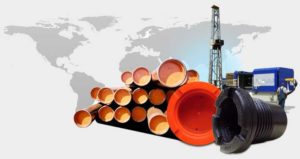Offshore oil rig platforms are coming to terms with the impacts of the shale oil boom. Thus, producers are looking for new efficiencies in order to compete with their onshore counterparts. This drive is bringing new innovative technologies into the industry, which cuts down costs and increases production quantities. The oil price’s decline from four years ago put the industry under pressure, forcing producers to reevaluate their operations. They also had to find better ways of designing, constructing, and running oil rig platforms.
Companies are now adopting digital technologies in order to streamline their project lifecycles. Traditionally, every rig had a bespoke design and construction, leading to unique platforms that cost billions of dollars to complete. With cheaper sources of oil and gas readily available, the offshore industry faced an existential crisis. To address the challenges, companies had to innovate every aspect of their design and build, as well as improve platforms and systems for increased yields.
Innovations in the Oil Rig Platform Design and Construction
In order to cut costs and reduce waste, offshore producers now borrow technologies from automotive and aerospace industries. For instance, technologies such as automation and simulations are proving to help advance operational efficiencies on oil rig platforms. Companies are also borrowing from their onshore counterparts, utilizing horizontal drilling in tieback projects to connect more wells to a single platform. These changes in their approach are yielding results. As such, the offshore industry is recovering and almost able to compete with cheaper sources.
Leveraging Digital Technologies for Improved Design and Operations
To reduce the costs of design and construction, companies now use digital twins of their assets. This method ensures they reduce waste and improve turnarounds. A digital twin mirrors the physical platform exactly, allowing engineers and hydrologists to investigate issues quickly. They can also mitigate downstream operational impacts and maintain detailed information about every aspect of the oil rig.
One of the major problems in the industry was disconnected information systems. This caused disparate operational processes and provided unique challenges for companies starting a refit or upgrade initiative. So, they began borrowing established digital-asset management practices from other industries. This allows producers to now have a clearer understanding of the existing systems and designs, helping them plan improvements easily and cost-effectively. Digital delivery helps companies bring projects in at half the cost. They also can cut operational waste and improve the overall yield from platforms.
Reducing Construction Cost with Specification and Equipment Standardization
One area the industry has been slow to embrace is with standardizing specifications and equipment across producers. Almost every offshore oil rig exploration company maintains its own set of specifications, requiring the manufacture of unique components for every producer. The industry is now looking to standardize their components to reduce the cost of manufacturing. The same valve utilized on a variety of platforms will deliver the necessary functionality, while the company may have to make slight changes to their designs to accommodate the standardized components.
Further savings come in the form of designing for off-the-shelf products instead of custom manufactured equipment, such as compressors. A standard compressor can do the same job as a custom counterpart while costing around 30% less than a made-to-order equivalent.
Floating Production Storage and Offloading Platforms
One of the major developments in the industry is the adoption of Floating Production Storage and Offloading (FPSO) platforms. These floating vessels provide greater agility and cost a lot less to design and fabricate than fixed platforms. Producers can roll out an FPSO platform in under a year, but the greatest benefit is with the ability to retrofit the vessel quickly at regular intervals. FPSOs also don’t require building a new vessel, as companies can repurpose oil tankers and redesign it to accommodate drilling and production operations.
FPSOs are maneuverable, allowing them to avoid harsh weather and move from field to field. This eliminates the need for the design and construction of expensive, fixed-rig platforms. A single investment into an FPSO allows producers to continue operations for decades from different locations with relatively small adjustments of the operational infrastructure. An FPSO is also ideal for deep-water drilling and eliminates the need for subsurface pipelines in challenging environments.
Automation and Remote Sensing Oil Rigs
Drone technologies allow operators to conduct inspections and digitally record the results for quick reference and actionable intelligence. As operators can preset drone flight paths and schedule inspection times, it reduces man-hours and enables teams to prevent downtimes even further.
Additionally, system automation will lead to a completely unmanned oil rig, where remote management systems carry out most of the operational oversight. It will still require human intervention, but resources can be located in the office instead of requiring extended offshore duty cycles.
Remote sensing technologies are helping scan seismic conditions, creating clearer pictures of the geological formations underground. With clearer imagery of salt formations, companies can now drill accurately into the reservoirs. This greatly improves the efficacy of tieback projects, helping connect wells from as far as two miles away to a single platform.
MSI Pipe Protection Technologies for Offshore Oil Rig Operators
For offshore drilling and oil rig operations, MSI Pipe Protection Technologies help protect key investments during each lifecycle production phase. MSI provides pipe and thread protection, stacking and storage frames, custom equipment protectors, lifting bails, and stabbing guides. As the offshore industry finally recovers from the oil price crash, ensuring every component remains protected until use is a valuable cost-saver for producers.
For standardized and custom protection solutions, call us toll-free at 1-877-276-9208. You may also get in touch with one of MSI Pipe Protection Technologies’ consultants today.





